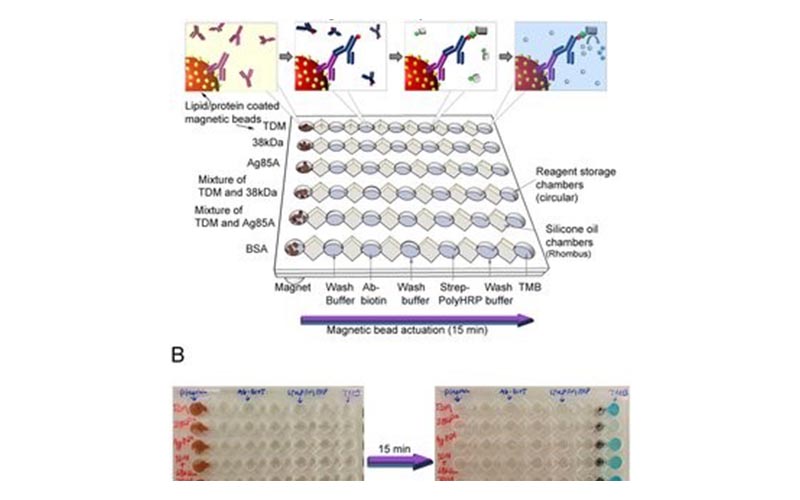A microchip-based test developed by A*STAR researchers can diagnose tuberculosis in 15 minutes. The test meets the speed, cost, accessibility and disposal standards recommended by the World Health Organization for detecting the deadly disease.
Tuberculosis is caused by the bacterium Mycobacterium tuberculosis. In 2015, the disease killed almost 2 million people, and infected more than 10 million, of which about 35 to 40 per cent went undiagnosed—a dangerous scenario given its contagious nature, spreading when people with active forms of the disease cough or sneeze into the air.
The most common diagnostic test used in the developing world is 100 years old, and involves looking at sputum samples under a microscope. It only detects up to 60 per cent of positive cases (a measure of sensitivity), and cannot confirm negative cases (specificity).
In recent years, several point-of-care tests have entered the market. These detect infection based on whether patients have developed antibodies against proteins secreted by the pathogen. They are cheap, quick and simple, but no more effective than the sputum method. Singhal wanted to improve the sensitivity and specificity of these techniques by instead looking for antibodies against lipids found on the surface of the tuberculosis bacteria.
His team sprinkled the bacterial lipids on magnetic beads and anchored the beads to one end of a microchip with six chambers for processing blood samples. Any antibodies present in the blood would latch on to the lipids and could then be tagged with a color-changing molecule. The lipid test offered much better results than the protein test, or any lipid–protein combinations. Assessing 146 samples, including 41 healthy controls, it detected 72 per cent of active tuberculosis cases, increasing to 90 per cent when combined with the sputum test—all within 15 minutes.
The research team estimates that the microchips could be mass-produced for less than US$10, and their small size makes them easy to dispose of underground. Team plans to further automate the device to light up with a color that can be measured using a smartphone. Team also wants to boost the test’s sensitivity, and find ways of detecting tuberculosis at a latent stage, before it becomes contagious.
“One-third of the world has latent tuberculosis infection, of which 5 to 10 per cent develop active tuberculosis. “The plan is to identify those people very early in the infection process.”





